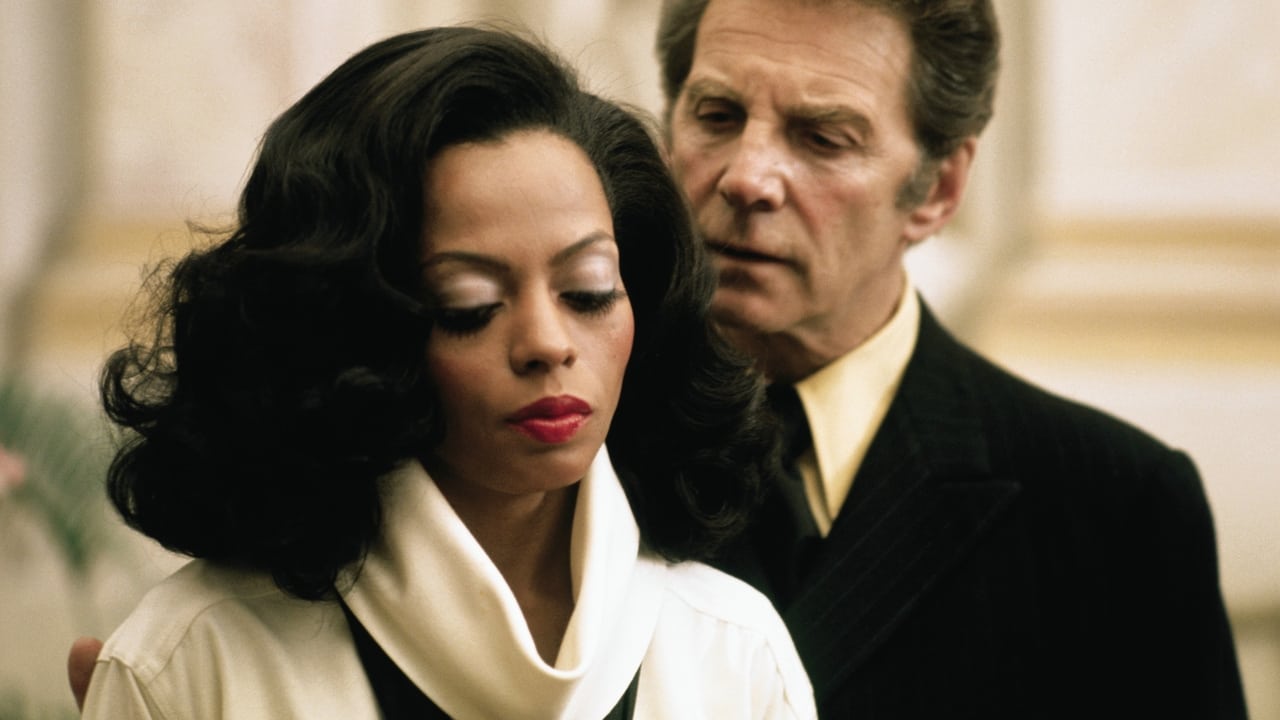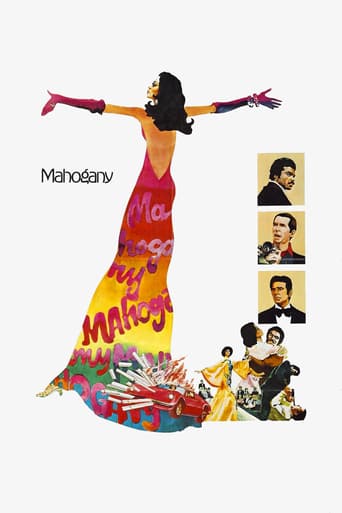



ridiculous rating
One of the best films i have seen
Clever, believable, and super fun to watch. It totally has replay value.
View MoreA terrific literary drama and character piece that shows how the process of creating art can be seen differently by those doing it and those looking at it from the outside.
View MoreIf your answer is no, then hop on board because this is the cinematic equivalent of a train crash you are NOT going to want to miss it. Ms. Ross, is the star of the film. She sings; she dances; she designs; she fights and weeps and she loves and models. She does everything except act...but who needs acting? Acting is over-rated and Diana Ross knew this when she was over-looked for an Oscar for Lady Sings the Blues. This was Berry Gordy's sawwy card for Diana's defeat. The longest music video of all time, and the first sequin-related injury in cinematic history. The plot (humor me!) is a tale as old as time. Girl has a secret desire to be famous and rich. Girl meets boy. Boy loves girl but girl has bigger dreams than Billy Dee Williams and his jive-talking ways. Girl is discovered and scales the dizzying heights of modeling and managing not to detect Anthony Perkins was gay, all the while enduring bad lines, great lighting and seemingly never-ending photo montages of her looking fab. Do you know where we're going to? Yes...girl finally realized fame and glamah is a mirage and all she really wants to do is return to the projects and have Billy Dee touch her in the mornings...but this time not walk away.Okay, maybe that's NOT the oldest story in the book, but this is a dazzling music video. Perhaps someone put the needle on the record and forgot to turn it off, because Diana sings incessantly throughout the entire movie. In it's many permutations, the song Do You Know Where You're Going To is laid against sloppy acting, script and amateur hour hysterics, with the goal, I assume..of holding this whole thing together. It doesn't need music..it needed a script and perhaps some actors. It needed Ms. Ross (Mahogany). She plays Tracy Chambers who will NOT be held back by a lack of talent, and she makes it clear she is more than a walking coat hanger. She is "discovered" by Anthony Perkins, who, if there was any shred of doubt..is gay. In fact the whole movie is pretty camp. It's a camp roller coaster of hilarity with more hand dancing and drag queenery than you have seen outside of Ru Paul's Drag Race. Brian Walker is more like a cardboard cut out of a character and here it is brought to life with all the verve and thrill of lichen by Billy Dee Williams. BDW was never really much of an actor, although...fun- fact..he went to school and was a classmate of Diahann Carroll, who later played the wife of his character Brady Lloyd on "Dynasty." Judging by his performance in Mahogany...he had all the required acting chops to make the move to Dynasty...hell...he could have made it to Love Boat! Brian Walker is a jive-talking community organizer and he takes a liking to Tracy, and thus begins the tale. At one point she arranges a photo shoot of her "fashions" taken in what appears to be a run down boarding house in the projects of Chicago. This isn't the least bit offensive, because the whole movie does away with the idea of taste right from the beginning. Anthony Perkins then lures Diana Ross away from Chicago, and away from the demanding BDW who wants her to give up her dreams and become the good wife. Just to teach Brian a lesson, Tracy enters into an abusive but rewarding relationship with Anthony Perkins who plays the camp and sassily sadistic photographer Sean. There are ups and downs, and moments of camp gold with some of the fashion shoots, and there is one scene where Diana falls into a fountain and it is later used as a fashion ad...because every designer in the 70's wanted to PROVE that polyester was resilient to fetid fountain water, and impervious to bad acting. In, what seems like an eternity, Tracy realizes she doesn't want this, she wants nothing to do with silk thread, kabuki kimonos and Jean-Pierre Aumont (don't ask!). She wants to leave the splendor of Rome for the brashness of 70's Chicago. It's high camp 70's cinema. No one dies (except the reputations and careers of everyone who appears in the film) and the whole thing is set to a theme song. Oh, did I mention there is a song? Do YOU know where you're going to? If you have any sense, it is to Netflix to rent this cinematic derailment.
View MoreEasily one of the worst blaxploitation movies to come out in the 1970s. Diana Ross plays Tracy a poor black woman who hopes to become a famous fashion designer. She meets handsome Brian (Billy Dee Williams) a political activist. They fall in love (of course) but then she meets a famous fashion photographer named Sean (Anthony Perkins). He wisks her away to Rome to model fashions and she immediately becomes world famous (just like real life). She starts designing her own fashions but discovers success means nothing without having someone you love to share it with. It all leads to a ridiculously predictable finale.What's wrong with this movie? Except for the beautiful title song ("Do You Know Where You're Going To") everything! It's badly written with tons of stupid lines. The direction is just dreadful--scenes are badly shot AND edited! The fashions are hilariously ugly (but this was the 1970s so...). The acting is hopeless--Perkins just redoes his "Psycho" role again, Ross (who proved she could act) looks lost and Williams walks through his role. Just tune in for the opening credits (for the song) then turn it off. Predictable, stupid and largely forgotten. A 1 all the way.
View More"And now, Mahogany presents the Kabuki Finale!" This is the movie that made me want to be a fashion designer *and* a drag queen. Who else would be able to sit through this tripe? But if you're a designer *or* a drag queen, or at least play one on TV, this is *delectable* tripe. Just like in *Mommie Dearest* when you *know* you're looking into the heart of Joan Crawford, *Mahogany* makes you feel as if you're looking into the heart of Diana Ross. A vanity production to beat *all* vanity productions, Mr. Gordy showcases his star (who was also his lover, *and*, we now know, mother of his child) in her first non-singing film -- her only other film being *Lady Sings The Blues*. In this self-serving tale of the perils of stardom, Diana, as Tracy Chambers, scales the heights of the glamour and glitter of international high fashion and plummets directly into Bad-Movie-Hall-Of-Fame. Tracy is in school to be a fashion designer, and we know this because we see her riding the bus around town sketching big drag queen-y outfits. But one humiliating interview follows another (Diana *excels* in demonstrating humiliation lots of teeth-gnashing and tossing her head), and life looks grim. Even the local neighborhood activist (this *is* the Seventies), played by the devastatingly handsome, but not deeply talented Billy Dee Williams, holds no charms for her. He wants to make the world a *better* place, and *she* just wants to make it a *prettier* place. Just when things seem hopeless, her job in the display department of a local department store puts her in the line of vision of a famous, but unstable fashion photographer, played to extreme by Anthony Perkins. Perkins mistakes Ross for a fashion model, and is smitten by her beauty *and* her commercial possibilities. He assigns her the name of Mahogany (since he names *all* of his women after inanimate objects), and she skyrockets, amidst *much* of Miss Ross' signature teeth gnashing, to the very pinnacle of the high-fashion scene. Unsatisfied with such superficial glory, and intent on furthering her own design career, Tracy/Mahogany slips one of her own designs into a fashion show she's modeling in. It is a hysterical, yet painful moment as the crowd falls silent and Mahogany is left on the stage and complete embarrassment. But the day is saved by an older Italian gentleman who becomes her lover and mentor. He bankrolls a design house for her, of course, and she scores another major success. This leads to a particularly favorite scene where Ross is in her element as the prima donna couturierre, she parades through her workroom, issuing demands and dictums, and eventually becomes entirely unglued, shrieking and cursing at her workers, who, not speaking English, have no idea what she's carrying on about. This scene seems to sum up Ross herself, as so many in this movie do, and she is utterly delightful but *not* in a pleasant way. Of course, it's inevitable that Mahogany will chuck her entire career in the trash and go home to Mr. Right, having learned her lesson about the ugly business of beautiful clothes, and the viewer sighs a sigh of palpable relief that this movie, this monument to egotism, has finally come to an end. Writing credits go to John Byrum and Bob Merrill. I don't imagine that they put this movie on their resumes.
View MoreThis film is another vanity piece for the ultimate diva Diana Ross. This film is also a classic example of Berry Gordy's failed attempts to make Motown more than what it was, and that was one of the most influetial record companies in history. Gordy even went as far as to direct this film with mixed results. This is nothing but pure melodrama and Diana Ross overracts throughout the whole film. Only Billy Dee Williams and Jean-Pierre Aumont manage to do credible performances as the two men who love Ross' character and Anthony Perkins is at his creepy best as the psychotic photographer. Unfortunately, Diana Ross is wasted in this role, which tends to prove that she had only one good performance in her and, unfortunately, it was in her debut, Lady Sings the Blues.
View More